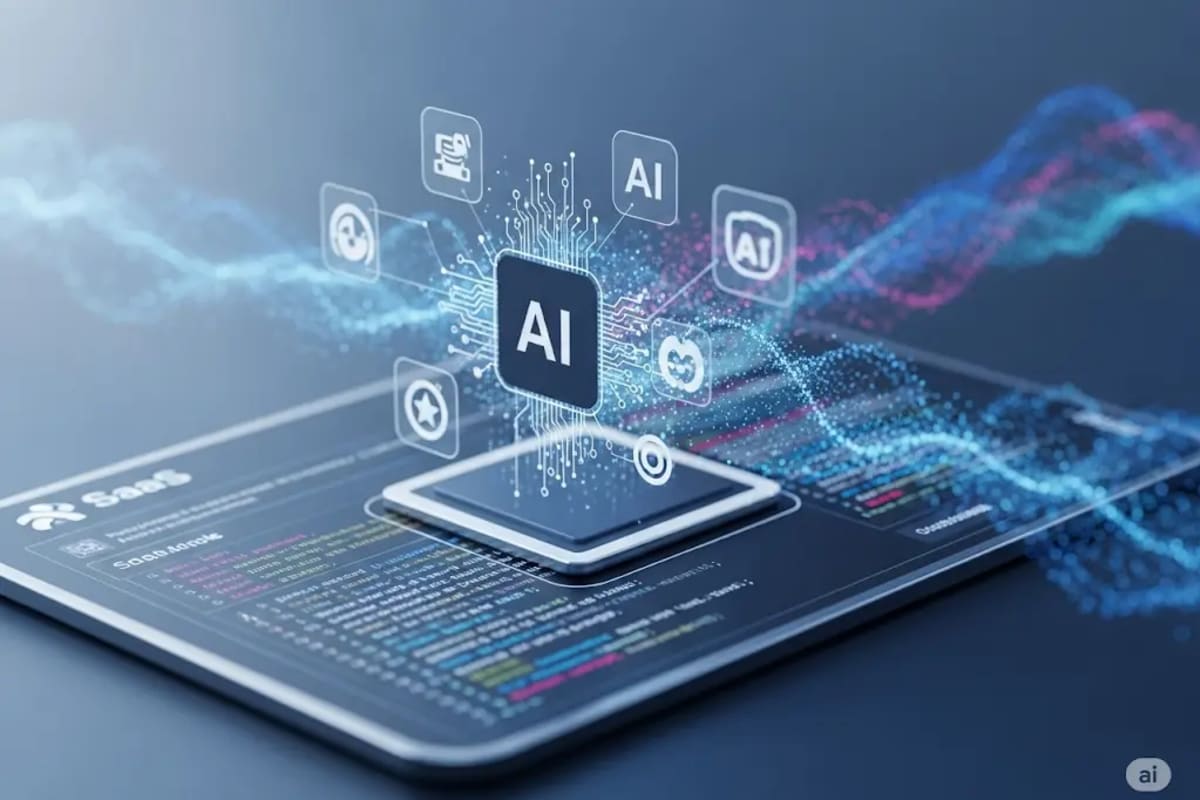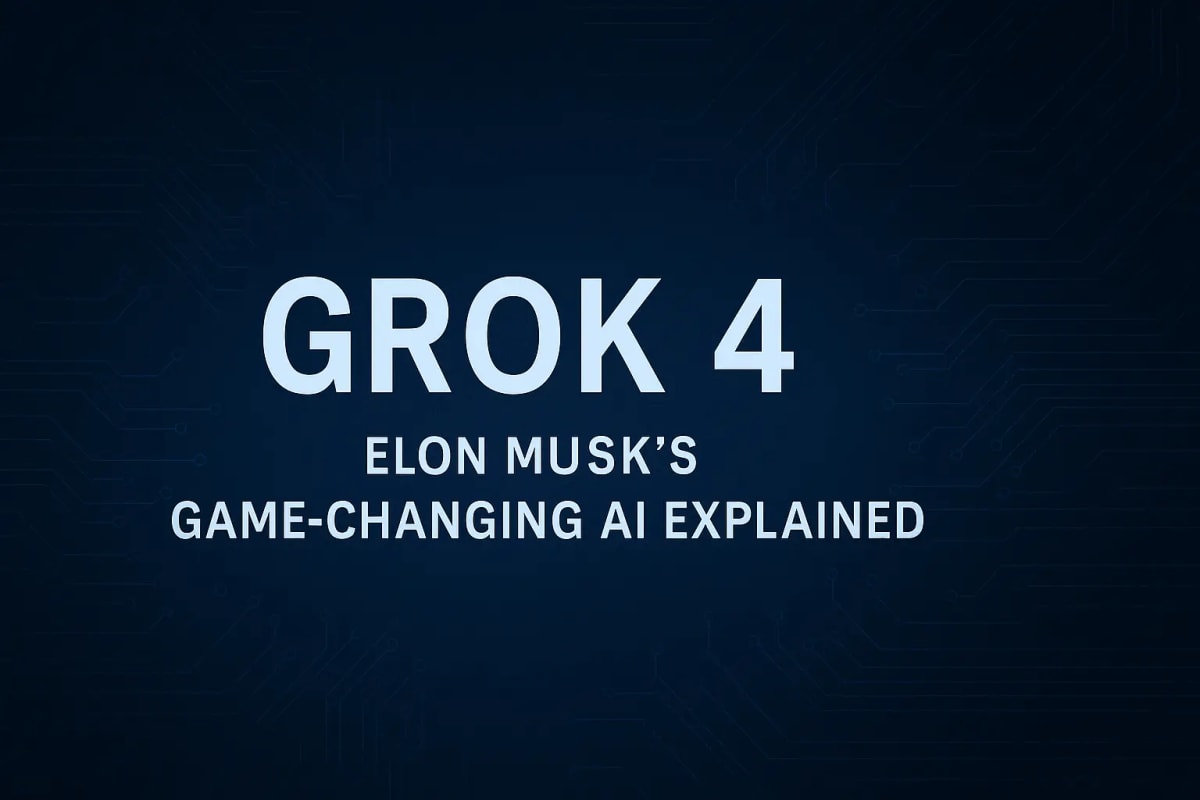
Launch a SaaS in 2025 using only AI—no coding needed. Explore 5 smart, scalable ideas you can build fast.
News and Niche
The technological landscape is constantly evolving, and 2025 is shaping up to be a pivotal year, particularly with the widespread accessibility and sophistication of Artificial Intelligence. For aspiring entrepreneurs and seasoned innovators alike, this presents an unprecedented opportunity to launch Software as a Service (SaaS) businesses with minimal coding expertise. Gone are the days when building a robust tech product required a massive team of developers and a colossal budget. Today, thanks to the explosion of powerful AI tools, you can conceptualize, build, and launch a fully functional SaaS application using little to no code.
This long-form blog post will delve into five highly SEO-optimized SaaS ideas that you can bring to life in 2025, leveraging the incredible capabilities of AI. We’ll explore how these concepts address real-world problems, how they can be implemented using readily available AI tools, and what makes them compelling ventures for the current market. Get ready to unlock your entrepreneurial potential and discover how AI can be your ultimate co-founder in the exciting world of SaaS.
The AI Revolution: Empowering Non-Technical Founders
Before we dive into the specific ideas, it’s crucial to understand why 2025 is the perfect year for AI-powered, no-code SaaS. The answer lies in the democratization of AI. What was once the domain of research labs and tech giants is now accessible to individuals through intuitive APIs, pre-trained models, and user-friendly platforms.
The Rise of No-Code and Low-Code AI Development
The synergy between no-code/low-code platforms and AI tools is a game-changer. These platforms provide visual interfaces and drag-and-drop functionalities, allowing you to build complex applications without writing a single line of code. When combined with AI tools, you can integrate sophisticated features like natural language processing (NLP), computer vision, predictive analytics, and generative AI directly into your SaaS product. This means you can focus on the what and why – the problem you're solving and the value you're creating – rather than getting bogged down in the how of technical implementation.
Cost-Effectiveness and Speed to Market
Historically, launching a SaaS startup involved significant upfront investment in development. However, by utilizing AI tools and no-code platforms, you drastically reduce development costs and accelerate your time to market. You can create a Minimum Viable Product (MVP) in a fraction of the time, gather user feedback, iterate rapidly, and scale your solution more efficiently. This agile approach minimizes risk and maximizes your chances of success.
Accessibility of Advanced AI Models
Leading AI providers like OpenAI, Google, and Anthropic are continually releasing more powerful and user-friendly AI models and APIs. These tools are designed to be easily integrated into various applications, offering functionalities such as content generation, image recognition, data analysis, and intelligent automation. This accessibility means you don't need to be an AI expert to build an AI-powered SaaS; you just need to understand how to leverage these existing technologies to solve specific problems.
Now, let's explore some concrete SaaS ideas that perfectly align with these trends.
1. Hyper-Personalized AI-Powered Learning & Skill Development Platform
In an era of continuous learning and upskilling, generic online courses often fall short. Users crave personalized experiences that adapt to their unique learning styles, knowledge gaps, and career goals. An AI-powered learning platform can address this by providing a truly bespoke educational journey.
The Problem: One-Size-Fits-All Learning Limitations
Traditional e-learning platforms often offer static content that doesn't cater to individual needs. Learners might get bored, overwhelmed, or frustrated if the material is too basic, too advanced, or irrelevant to their specific objectives. This leads to high dropout rates and ineffective skill acquisition. Furthermore, identifying specific skill gaps and finding targeted resources can be a time-consuming manual process.
The AI Solution: Adaptive Learning Paths & Content Curation
Imagine a SaaS platform that uses AI to:
Assess Learning Styles & Knowledge Gaps: Upon onboarding, AI algorithms can analyze a user's initial assessments, learning preferences (visual, auditory, kinesthetic), and existing knowledge base to create a comprehensive profile.
Dynamic Curriculum Generation: Based on the user's profile and stated goals, the AI can dynamically generate a personalized curriculum, recommending specific courses, modules, and learning materials from a vast library of content. This includes tailoring the pace and difficulty of the content.
Intelligent Content Curation & Summarization: Leveraging advanced NLP and generative AI, the platform can curate relevant articles, videos, and interactive exercises from across the web. More impressively, it can summarize complex topics, extract key takeaways, and even generate personalized study notes or quizzes.
Real-time Feedback & Performance Coaching: AI can monitor user progress, identify areas of struggle, and provide real-time feedback and targeted recommendations for improvement. This could include suggesting supplementary materials, offering alternative explanations, or even generating practice problems.
Skill Gap Analysis & Career Pathing: The AI can constantly analyze emerging industry trends and job market demands, helping users identify future skill requirements and suggesting learning paths to bridge those gaps, effectively acting as a career coach.
How to Build it with AI Tools in 2025:
Natural Language Processing (NLP) APIs: Utilize APIs from platforms like OpenAI (GPT series) or Google AI (Gemini) for content summarization, question answering, and generating personalized explanations.
Machine Learning (ML) for Recommendation Engines: Tools like Google Cloud AI Platform or AWS SageMaker can be used to build and deploy recommendation engines that suggest learning materials based on user behavior and preferences.
No-Code Platforms with AI Integrations: Platforms like Bubble, Adalo, or Webflow (with AI plugins) can handle the front-end design, user management, and core application logic. They can seamlessly integrate with the AI APIs.
Data Analytics Tools: Use platforms like Mixpanel or Amplitude to track user engagement, learning patterns, and identify areas for platform improvement. AI can then analyze this data to further refine personalization.
Content Management Systems (CMS): A robust CMS (which can be built using no-code tools) to host and categorize the vast amount of learning content.
Monetization Strategy:
A tiered subscription model works well here, with increasing levels of personalization, access to premium content, and advanced coaching features. Consider a freemium model to attract users, then upsell them to paid plans for deeper insights and more extensive learning resources.
2. AI-Powered "Done-For-You" Marketing Content Generator
Content is king, but creating high-quality, engaging, and SEO-friendly content consistently is a massive challenge for businesses of all sizes, especially small to medium-sized enterprises (SMBs). An AI-powered "done-for-you" content generator can revolutionize their marketing efforts.
The Problem: Content Creation Overload for Businesses
Many businesses, particularly SMBs and solopreneurs, struggle with content creation. They lack the time, resources, or expertise to consistently produce blog posts, social media updates, email newsletters, and website copy that resonates with their target audience and drives conversions. This often leads to missed marketing opportunities and stagnant online presence.
The AI Solution: Automated, Brand-Aligned Content Production
This SaaS idea centers on an AI that acts as a virtual marketing team, generating diverse content tailored to a business's specific needs and brand voice.
Brand Voice & Persona Customization: Users can input their brand guidelines, target audience demographics, and desired tone. The AI learns and adapts to this specific brand persona, ensuring consistency across all generated content.
Multi-Format Content Generation: The platform can generate blog posts, social media captions (for various platforms like LinkedIn, Instagram, TikTok), email marketing copy, ad headlines, product descriptions, and even video script outlines.
SEO Optimization & Keyword Integration: The AI can be trained to identify relevant keywords for a given topic and naturally integrate them into the generated content, boosting organic search visibility.
Content Calendar & Scheduling Integration: Beyond creation, the tool can help generate content calendars and integrate with popular scheduling tools (e.g., Buffer, Hootsuite) for seamless content deployment.
Idea Generation & Brainstorming: If a business is stuck for ideas, the AI can brainstorm topics based on current trends, competitor analysis, or audience interests.
Performance Prediction (Bonus Feature): Advanced versions could leverage AI to predict the potential performance of content based on historical data and audience engagement patterns.
How to Build it with AI Tools in 2025:
Generative AI (LLMs): Tools like OpenAI's GPT-4o, Google's Gemini, or Anthropic's Claude are essential for generating human-like text across various content formats.
NLP for Sentiment Analysis & Tone Recognition: To ensure brand alignment, NLP models can analyze the generated content's tone and sentiment.
Keyword Research Tools (API Integration): Integrate with APIs from SEO tools like Semrush or Ahrefs to pull keyword data and optimize content.
No-Code Automation Platforms: Tools like Zapier or Make (formerly Integromat) can automate workflows, such as sending generated content to a scheduling tool or notifying users.
User Interface (UI) Builders: Webflow, Bubble, or AppGyver can be used to build an intuitive dashboard where users can input requirements, review generated content, and manage their content calendar.
Monetization Strategy:
A subscription-based model with tiers based on the volume of content generated, number of users, access to premium features (e.g., advanced SEO analysis, integrated scheduling), and integration capabilities. A free trial with limited generation credits could be a strong lead magnet.
3. AI-Powered Smart Inventory Management & Predictive Ordering for SMB Retailers
Small to medium-sized retailers often struggle with inefficient inventory management, leading to stockouts, excess inventory, and wasted capital. An AI-powered solution can optimize their operations significantly.
The Problem: Inefficient Inventory and Missed Sales
Many SMB retailers rely on manual or outdated inventory systems, which makes it difficult to track stock levels accurately, predict demand, and place timely orders. This results in lost sales due to out-of-stock items, increased carrying costs from overstocking, and a general lack of operational efficiency.
The AI Solution: Proactive Stock Optimization & Demand Forecasting
This SaaS solution leverages AI to provide intelligent inventory control and predictive ordering, transforming how retailers manage their stock.
Real-time Inventory Tracking & Anomaly Detection: The AI integrates with POS systems and uses computer vision (for visual stock checks) or sensor data to provide accurate, real-time inventory levels. It can also flag unusual stock movements or discrepancies.
Predictive Demand Forecasting: Utilizing historical sales data, seasonal trends, external factors (weather, local events), and even social media sentiment, the AI can accurately predict future demand for individual products. This helps retailers avoid stockouts and overstocking.
Automated Reordering & Supplier Integration: Based on demand forecasts and predefined reorder points, the AI can automatically generate purchase orders and even communicate directly with suppliers (via API integrations) to streamline the ordering process.
Optimized Warehouse Layout & Picking Routes: For retailers with small warehouses, the AI could suggest optimal product placement based on sales velocity and frequently bought together items, potentially even optimizing picking routes for staff.
Pricing Optimization Recommendations: The AI can analyze competitor pricing, demand elasticity, and current stock levels to recommend dynamic pricing strategies that maximize revenue and minimize waste.
Waste Reduction & Shelf-Life Management: For perishable goods, the AI can track expiry dates and recommend promotions or actions to reduce waste.
How to Build it with AI Tools in 2025:
Machine Learning for Time Series Forecasting: Libraries and platforms like TensorFlow, PyTorch, or Google Cloud AI Platform (for AutoML forecasting) can be used to build predictive models.
Data Integration Tools: Tools like Zapier or custom API integrations (easily built with no-code backend platforms like Xano) to connect with various POS systems (e.g., Shopify, Square) and supplier APIs.
Computer Vision APIs (Optional but Powerful): If visual stock checks are desired, integrate with image recognition APIs from Google Cloud Vision or AWS Rekognition.
No-Code Database & Workflow Tools: Airtable, Supabase, or Xano for managing product data, inventory levels, and automating reordering workflows.
Analytics & Reporting Dashboards: Build interactive dashboards using tools like Retool or internal dashboards within your chosen no-code platform to visualize inventory insights and forecasts.
Monetization Strategy:
A performance-based or tiered subscription model. Pricing could be based on the number of products managed, transaction volume, or the percentage of cost savings achieved through optimized inventory. Offering a free basic plan with limited features could attract smaller retailers.
4. AI-Powered Customer Service Co-Pilot for E-commerce
Even with the rise of chatbots, customer service remains a significant pain point for many e-commerce businesses. A truly intelligent AI "co-pilot" can empower human agents, leading to faster resolutions and higher customer satisfaction.
The Problem: Overwhelmed Support Teams & Inconsistent Responses
E-commerce businesses often face a high volume of customer inquiries, leading to long response times, agent burnout, and inconsistent answers. While basic chatbots can handle FAQs, complex issues still require human intervention, and agents need quick access to accurate information.
The AI Solution: Enhancing Human Customer Support, Not Replacing It
This SaaS idea focuses on an AI assistant that works alongside human customer service agents, augmenting their capabilities and improving efficiency.
Intelligent Ticket Prioritization & Routing: The AI can analyze incoming customer inquiries (emails, chats, social media messages), understand their sentiment and urgency, and automatically route them to the most appropriate agent or department.
Real-time Knowledge Base Retrieval: During a customer interaction, the AI can instantly search and retrieve relevant information from the company's knowledge base, product catalogs, order history, and even external resources, presenting it to the agent in real time.
Automated Response Generation (with Human Override): For common queries, the AI can draft accurate and personalized responses, allowing the agent to simply review and send, or easily modify. This significantly reduces typing time and ensures consistent messaging.
Sentiment Analysis & Proactive Intervention: The AI can monitor customer conversations for signs of frustration or dissatisfaction, alerting agents to potential escalations and suggesting empathetic responses or de-escalation tactics.
Agent Training & Performance Insights: By analyzing agent interactions, the AI can identify areas where agents might need additional training or support, providing valuable insights for team leaders. It can also highlight best practices and successful resolution strategies.
Multilingual Support: Leverage AI translation capabilities to enable seamless communication with customers in multiple languages without needing dedicated bilingual agents.
How to Build it with AI Tools in 2025:
Natural Language Processing (NLP) & Understanding (NLU): Critical for understanding customer intent, sentiment analysis, and extracting key information from queries. OpenAI, Google AI, and IBM Watson offer powerful NLP APIs.
Knowledge Graph & Semantic Search: Build a knowledge graph (can be done with tools like Neo4j or even complex relational databases) to organize company data, and use semantic search capabilities (often integrated with NLP APIs) for accurate information retrieval.
CRM Integration: Integrate with popular CRM systems (e.g., Salesforce, HubSpot) using their APIs or no-code integration platforms like Zapier.
No-Code Front-End for Agent Dashboard: Build a user-friendly dashboard for customer service agents using tools like Bubble, Webflow, or Internal.io, where the AI's suggestions and information are displayed.
AI for Text Generation: Similar to the content generation SaaS, LLMs will be crucial for drafting responses.
Monetization Strategy:
A per-agent subscription model, with tiers based on the number of AI-assisted interactions, access to advanced features (e.g., multilingual support, sentiment analysis dashboards), and integration capabilities. A free trial for a small team could showcase the immediate value.
5. AI-Driven Personal Finance & Budgeting Assistant for Freelancers & Gig Workers
The rise of the gig economy means a growing number of freelancers and contract workers who often struggle with managing their finances, taxes, and fluctuating income. An AI-powered assistant can become their indispensable financial partner.
The Problem: Financial Complexity for Freelancers
Freelancers often face unique financial challenges: inconsistent income, complex tax regulations, difficulty in tracking expenses, and the need for rigorous budgeting without a fixed salary. Traditional budgeting apps may not adequately address these specific needs, leading to stress and potential financial mismanagement.
The AI Solution: Intelligent Financial Management & Tax Optimization
This SaaS offers a smart personal finance assistant tailored for the self-employed, leveraging AI to automate and simplify their financial lives.
Dynamic Income & Expense Tracking: The AI connects to bank accounts and credit cards, automatically categorizing transactions and learning from user inputs. It can predict future income based on ongoing projects and past payment patterns.
Personalized Budgeting & Cash Flow Forecasting: Based on income fluctuations and spending habits, the AI creates flexible, personalized budgets. It provides real-time cash flow forecasts, helping freelancers anticipate lean periods and plan accordingly.
Automated Tax Estimation & Deduction Identification: This is a major pain point. The AI can track eligible business expenses, estimate quarterly tax payments, and even identify potential deductions based on industry and transaction data, simplifying tax season significantly.
Invoice & Payment Reminders: The platform can generate professional invoices and send automated payment reminders, helping freelancers get paid on time.
Savings Goal Optimization: Users can set financial goals (e.g., retirement, down payment), and the AI will recommend optimal savings strategies and alert them to potential shortfalls or opportunities.
Financial Health Insights & Recommendations: The AI provides actionable insights into spending habits, profitability of projects, and overall financial health, offering personalized recommendations for improvement.
How to Build it with AI Tools in 2025:
Machine Learning for Pattern Recognition & Prediction: Crucial for income forecasting, expense categorization, and identifying tax deductions.
Data Aggregation & Bank APIs: Integrate with financial data aggregation services (e.g., Plaid, Finicity) to securely connect with users' bank accounts.
NLP for Transaction Tagging: If manual input is needed, NLP can help parse descriptions and suggest categories.
No-Code Backend (e.g., Xano, Supabase): To handle secure user data, transactions, and run the backend logic for financial calculations.
No-Code Front-End (e.g., Bubble, Adalo): To build a user-friendly mobile and web application interface for financial tracking and reporting.
AI for Report Generation: Generate customized financial reports and tax summaries for users.
Monetization Strategy:
A subscription model with tiered features. Basic expense tracking and budgeting could be free, while advanced features like automated tax estimation, detailed cash flow forecasting, and invoicing would be part of a premium plan. A higher tier could offer integration with accounting software or tax professionals.
Beyond the Ideas: Key Considerations for Launching Your AI SaaS
While these ideas offer a glimpse into the vast potential of AI-powered no-code SaaS, successfully launching and scaling your venture requires more than just a great concept. Here are some crucial considerations:
Focus on a Niche and Solve a Specific Problem
Instead of trying to be everything to everyone, identify a narrow niche and deeply understand the pain points of that specific target audience. The more focused your solution, the easier it will be to market and achieve product-market fit. Each of the ideas above targets a specific demographic with well-defined problems.
User Experience (UX) is Paramount
Even with powerful AI, a clunky or confusing interface will deter users. Invest time in designing an intuitive and enjoyable user experience. No-code platforms offer robust UI/UX design capabilities, so leverage them to create a seamless journey for your users. Remember, AI should enhance the experience, not complicate it.
Data Privacy and Security
When dealing with user data, especially sensitive financial or personal information, data privacy and security must be your top priority. Ensure your chosen no-code platforms and AI tools comply with relevant data protection regulations (e.g., GDPR, CCPA). Clearly communicate your data handling policies to users.
Iteration and Feedback
Launch your MVP quickly, gather feedback from early adopters, and iterate continuously. The beauty of no-code and AI is the ability to make rapid changes and improvements based on real-world usage. Don't strive for perfection from day one; aim for functionality and value.
Marketing and SEO
Even the best product needs to be discovered. Develop a robust marketing strategy from the outset. For a SaaS business, content marketing and SEO are particularly effective. This means:
Keyword Research: Identify the terms your target audience uses to search for solutions to their problems. Integrate these keywords naturally throughout your website, blog posts, and marketing materials.
Valuable Content: Create high-quality, informative blog posts, guides, and case studies that address your audience's pain points and showcase how your SaaS can help. This very blog post is an example of long-form, SEO-optimized content.
Technical SEO: Ensure your website is fast, mobile-friendly, and technically sound.
Backlinks: Build authority by acquiring high-quality backlinks from reputable websites.
Social Media and Community Engagement: Be present where your audience spends their time online.
Monetization Strategy
Carefully consider your pricing model. Will it be subscription-based, usage-based, freemium, or a combination? Your pricing should align with the value you provide and be competitive within your niche. AI features can often command a premium, but clearly articulate the added value.
Conclusion: Your AI-Powered SaaS Journey Begins Now
The year 2025 represents an incredible inflection point for aspiring SaaS founders. The convergence of powerful, accessible AI tools and user-friendly no-code development platforms has lowered the barrier to entry significantly. You no longer need to be a seasoned developer to bring a transformative tech product to life.
By focusing on real-world problems and strategically leveraging AI for personalization, automation, and intelligent insights, you can create a highly valuable and scalable SaaS business. Whether it's revolutionizing learning, streamlining content creation, optimizing retail operations, enhancing customer service, or simplifying freelance finances, the opportunities are abundant.
So, if you've been harboring a SaaS idea but felt constrained by technical hurdles, now is the time to act. Embrace the power of AI tools, dive into the world of no-code, and start building. Your unique, AI-powered SaaS solution could be the next big success story of 2025. The future of software development is here, and it's more accessible than ever before. What will you build?
Related Articles

GPT-5 Predictions: What to Expect from the Next AI Leap
Explore GPT-5 predictions, its expected release, enhanced capabilities, and how it will transform AI, business, education, and beyond.

Beyond Automation: 5 Groundbreaking Jobs Only AI Can Truly Do
Explore 5 futuristic jobs only AI can do — from quantum coding to dream design. Discover how machines will shape the future of work.

Grok 4: The Dawn of a New AI Era
Grok 4 is Elon Musk’s latest AI powerhouse, launched in July 2025 by xAI. Smarter, faster, and deeply integrated with real-time data, it’s reshaping how we think about artificial intelligence—from coding and research to voice interaction and beyond.